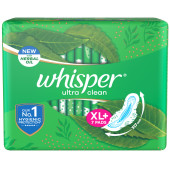Female Menstrual Cycle Chart


A menstrual cycle is a process wherein a woman’s body prepares for pregnancy. Every month a new uterine lining, also known as the endometrium, develops, making the body ready to nourish a fertilised egg. The uterus sheds the endometrium if the egg is not fertilised, resulting in menstruation. Most women experience their first period, or menarche, between the ages of 11 and 14.
Understanding Women’s Menstrual Cycle
The days of a period cycle are counted from the first day of menstrual bleeding to the first day of menstruation in the following month. Hormonal signals from the brain control the entire period cycle. Estrogen promotes the development and thickening of the uterine lining; follicle-stimulating hormone promotes the production and release of a mature egg; and progesterone levels rise to aid the attachment of a fertilised egg to the uterine lining.
The average woman's menstrual cycle lasts 28 days, which means there are approximately six days every month to conceive. This covers the day one of the ovaries releasing an egg, known as ovulation, as well as the five days leading up to it.
Ovulation is required for pregnancy, and tracking your cycles is one approach to learn about your fertile period of the month. You'll need to track your menstrual cycle to figure it out. The first day of the period is day 1. It is recommended to keep track for a few months as the length of a female menstrual cycle can fluctuate from month to month.
Hormones and the Menstrual Cycle

The luteinizing hormone (LH), follicle stimulating hormone (FSH), estrogen and estradiol (E2), and progesterone are the five primary hormones that influence the period cycle. They serve as messengers, informing the body when it's time to advance to the next stage of your cycle. LH, for example, rises to signal to the ovaries when it’s time to transfer the egg down the fallopian tube, also known as ovulation.
Female Menstrual Cycle Chart

Day |
Phase |
What Happens |
|---|---|---|
| 1-5 | Menses | Bleeding |
| 6-14 | Follicular | Egg grows in the ovarian follicle, and uterine lining is built |
| 14 | Ovulation | Egg that can be fertilized |
| 15-28 | Luteal | If fertilized, egg moves to the uterus and attaches to the lining – pregnancy occurs. If not, cycle begins with menstruation |
Thus, it is important to be aware of the female menstrual cycle, in order to identify misses in your menstruation or the period cycle. As mentioned, it also helps in gauging your most fertile time of the month, in case you are trying to get pregnant.





